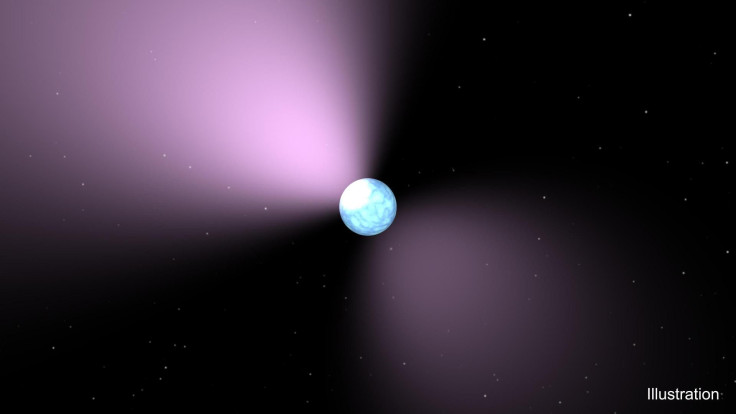20-Year-Old Gamma Ray Mystery Solved With Help Of Citizen Scientists
KEY POINTS
- Researchers finally found the origin of a mysterious gamma ray source detected in 1999
- The neutron star was completely invisible in radio waves
- Thousands of volunteers were part of the research
Scientists have finally solved a gamma ray mystery that has been puzzling them since 1999, all thanks to citizen scientists.
Gamma ray source 4FGL J1653.6−0158 was first observed in 1999 but its origin remained unidentified for many years. It has been known that a neutron star, the collapsed remnant of a giant star, is its likely origin. Years later, in 2014, scientists determined that this mystery source was very likely a binary system.
"In 2014, after observations of the system with optical and X-ray telescopes it became clear that this is a very tight binary system," co-author of a new study, Colin Clark of the Jodrell Bank Centre for Astrophysics at The University of Manchester (UOM), said in a news release. "But all searches for the neutron star in it have so far been in vain."
This is because they also have to detect the neutron star's regular pulsations or flashes to actually confirm its presence, not just its radio waves or gamma rays, the UOM news release explains. With these rotations, much like the rhythmic flashes of a lighthouse, the neutron star is then called a radio or gamma ray pulsar.
In the case of 4FGL J1653.6−0158, there was "strong evidence" of it being a binary gamma ray pulsar, the researchers noted in the study.

To find it, the researchers sought help from thousands of citizen scientists. Thousands of volunteers donated idle computer cycles to help search the gamma-ray data using the distributed Einstein@Home volunteer computer system. In less than two weeks, the team was able to make a discovery that would have taken decades or centuries on a single computer, the researchers said.
With the citizen scientists' help, the researchers were finally able to describe the elusive binary system and the neutron star, now dubbed PSR J1653-0158.
"We have discovered the Galactic dance of a super heavyweight with a flyweight: At slightly more than twice the mass of our Sun, the neutron star is extraordinarily heavy," study first author Lars Nieder, of the Max Planck Institute For Gravitational Physics Albert Einstein Institute (AEI), said in an AEI news release. "Its companion has about six times the density of lead, but only about 1% the mass of our Sun. This 'odd couple' orbits every 75 minutes, more quickly than all known comparable binaries."
"The neutron star is also one of the fastest rotating while its magnetic field is unusually weak," the researchers noted.
The researchers also searched for possible radio waves but found none, making PSR J1653-0158 the second rapidly rotating pulsar where radio waves are not detected, the researchers noted. The first one was discovered in 2018, also through the Einstein@Home volunteer project.
The researchers propose two possible explanations for the lack of radio pulsations, the first being that the pulsar actually does not send radio waves toward the Earth. Another possibility is that the radio waves are simply being blocked by the plasma cloud enveloping the binary system.
As the researchers explain, the pulsar they discovered can be considered a "black-widow-type" because, just like its namesake spider, it essentially "eats" its companion, thereby producing plasma clouds that envelope the system and block the radio waves.
On the other hand, the gamma rays that led to the discovery was still detectable because the plasma clouds do not stop them.
"The discovery of PSR J1653−0158 is the result of a multiwavelength campaign," the researchers wrote. "We are deeply grateful to the thousands of volunteers who donated their computing time to Einstein@Home, and to those whose computers first detected PSR J1653−0158: Yi-Sheng Wu of Taoyuan, Taiwan; and Daniel Scott of Ankeny, Iowa, USA."
The study is published in Astrophysical Journal Letters.
© Copyright IBTimes 2024. All rights reserved.












